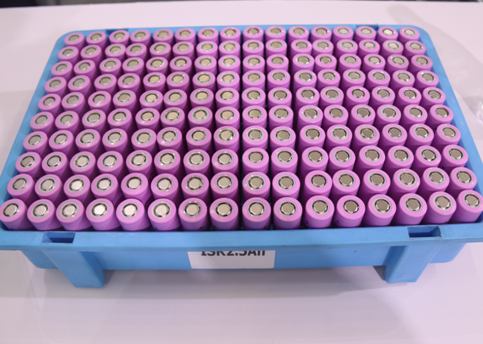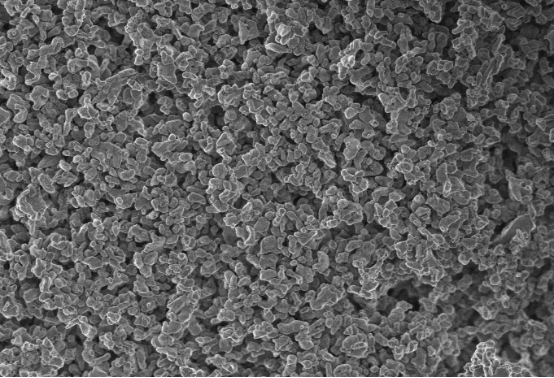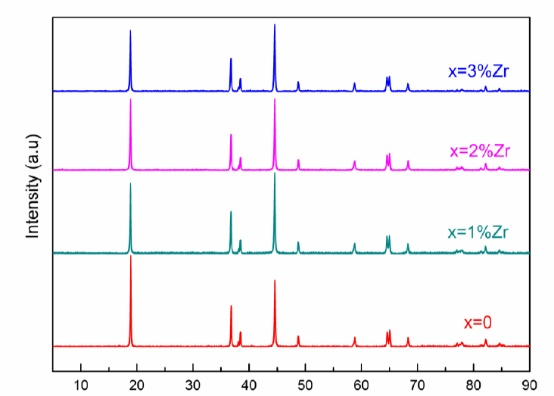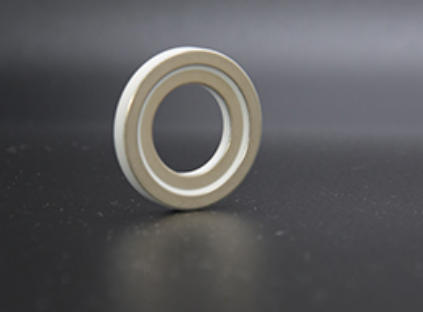If you have questions or suggestions, please leave us a message, we will reply you as soon as we can!
Contact usWith the continuous development of technology, advanced ceramics in certain high-tech fields have become key materials. For example, in the lithium industry, ceramic materials play an important role in its production chain. Some are used for electrodes and diaphragm, some are used for packaging, and some have become auxiliary materials for the production chain. The ceramic materials market is also booming because of lithium. Today, we will learn what ceramic materials are needed to produce a lithium battery.

Ceramic diaphragm
Lithium-ion batteries are mainly composed of five parts: cathode material, anode material, diaphragm, electrolyte and encapsulation material. Diaphragm is the highest technical barrier in lithium-ion battery materials. Its cost is second only to the cathode material, about 10% to 14%, in some high-end battery diaphragm cost ratio of even 20%.

1. Disadvantages of traditional diaphragm
Commercial lithium-ion battery diaphragm is mainly polyethylene, polypropylene microporous film. Polyolefin diaphragm also has defects, on the one hand, when the external temperature exceeds the melting point of the diaphragm, the diaphragm itself will occur in a large area shrinkage, resulting in thermal runaway phenomenon or short circuit generation within the battery. Hence, keeping the size and shape of the diaphragm unchanged is the key to improving battery safety. On the other hand, the inconsistency between the polarity of polyolefin diaphragm and organic electrolyte can result in poor wettability of the electrolyte to the diaphragm. The battery in the repeated charging and discharging process of the diaphragm to the non-water electrolyte retention capacity is poor, thus affecting the cycle performance of the battery.
2.Advanced and representative materials of ceramic diaphragm
At present, ceramic diaphragms can be divided into two categories according to the preparation method. One is the traditional polyolefin diaphragm or non-woven membrane as the base film. The use of bonding, hot pressing or grafting methods on top of the base film covered with a ceramic layer, thus forming a ceramic composite membrane. The other is the nano-level ceramic particles mixed into organic materials to make a mixed slurry, and then the slurry is stretched into a film or made of a non-woven membrane.

With the popularity of tablet PCs and electric vehicles, the traditional polyolefin diaphragm cannot meet the high voltage and high energy density requirements in terms of high voltage and high-temperature resistance. The adoption of diaphragm coating technology utilizes ceramics’ low thermal conductivity to prevent the expansion of certain thermal runaway points in the battery. Its inorganic material structure characteristics can improve the thermal contraction of the diaphragm performance, with higher safety as well as resistance to high potentials. In addition, the ceramic coating is hydrophilic and has a better absorption function for liquid electrolytes, which can simultaneously improve the uniformity of current distribution within the battery during the charging and discharging of lithium batteries.
At present, the most popular ceramic diaphragm materials are high-purity alumina.
High-purity alumina
Alumina is a high-hardness compound with a melting point of 2054°C and a boiling point of 2980°C. It is an ionic crystal that can be ionized at high temperatures. As an inorganic material, alumina has high thermal stability and chemical inertness and is a good choice for ceramic coating of battery separators. Its advantages are:
(1) Long cycle life. Reduced mechanical micro-short circuits during cycling, effectively enhancing cycle life.
(2) High multiplicity. High-purity nano-alumina can form solid solution in lithium batteries to improve multiplicity and cycling performance.
(3) High-purity nano alumina also has very excellent thermal conductivity. When the battery temperature is too high, this material can conduct heat well, thus solving the problem of poor thermal conductivity of PP/PE material.
(4) Good wettability. High-purity nano alumina powder has good liquid absorption and retention ability.
(5) High-purity nano-alumina material also has excellent flame retardancy. This is because the alumina material itself is a very good flame retardant. Even if the temperature is too high and reaches the zero-boundary point of combustion, the good flame retardant properties of the material will prevent widespread combustion or even explosion.
(6) When the current is too high, it can block the current. As the lithium-ion battery capacity continues to increase, the internal accumulation of more and more energy, the internal temperature will increase. There is a possibility that the temperature is too high so that the negative diaphragm is melted and causes a short circuit.

Positive additive - zirconium oxide
The application of nanoscale composite zirconia products in the new energy field is also expanding, and more and more lithium battery design solutions are using zirconia powder as cathode additive materials to stabilize battery performance and increase cycle life. Let's take lithium nickel cobalt manganate (LiNi0.8Co0.1Mn0.1O2) cathode material as an example to see the effect of nano zirconia on the performance of cathode material.
1. Impact on the structure
By doping LiNi0.8Co0.1Mn0.1O2 with ZrO2, it was found that the XRD characteristic peaks of each material are more or less the same under different doping amounts, and they belong to the hexagonal crystal system of α-NaFeO2 type of lamellar structure without other heterogeneous peaks, indicating that the ZrO2 doped material does not affect the overall structure of the original.

XRD patterns of Li(Ni0.8 Co0.1 Mn )0.11-x Zr Ox2 anode materials with different doping amounts of ZrO 2
2. Effect on morphology
With the increase of Zr doping, the primary particles of the material gradually changed from the initial 200-400 nm size of regular lumpy particles to the size of 100-200 nm, aggregated dense particles, and the large particles formed by the agglomeration of primary particles are only 1 to 2 μm, and the primary particles of the doped material are beginning to fall off from the sphere, and the sphericity of the particles are not as good as the undoped LiNi0.8Co0.1Mn0.1O2material.
The smaller the particle size, the shorter the diffusion path of Li+ and the more favorable the debonding of Li+ in the lamellar structure, but to a certain extent the doped material also destroys the sphere-like morphology.
3. Effect on electrochemical properties
It was found that the discharge-specific capacity of ZrO2 doped materials was significantly higher than the original LiNi0.8Co0.1Mn0.1O2 materials, which may be related to the smaller particle size of ZrO2 doped materials mentioned above, and the smaller particle size makes the de-embedding of the materials easier during the charging and discharging process, so the discharge specific capacity of the doped materials increased.
As charging and discharging proceed, a certain amount of doped ions Zr4+ may also migrate to the electrode surface and form solid solution, which prevents structural collapse due to anisotropic structural changes during charging and discharging, while the solid solution also acts as a protective coating to prevent cobalt from dissolving into the electrolyte.
Positive material sintering - ceramic kiln equipment
In recent years, with the increasing popularity of new energy vehicles, the demand for battery cathode materials has grown rapidly, and the booming downstream market has driven domestic kiln manufacturers to actively upgrade their production equipment, with demand for silicon carbide ceramics, cordierite ceramics and other kiln equipment growing extremely rapidly.
Other ceramic materials
In addition, there are also ceramic powders or products used in the preparation or assembly of lithium batteries. In terms of cathode materials, high purity alumina can also be used as an additive material for battery cathode, playing the role of coating and doping.
In the negative electrode, it is understood that silicon carbide micro powder can be compounded with graphite, carbon nanotubes, titanium nitride nanoparticles, etc. to make the negative electrode material for lithium batteries, which can improve the capacity and service life of lithium batteries.
In the lithium battery sealing link, a coin-sized electronic ceramic ring (scientific name "new power battery ceramic sealing connector") is an important part of the new energy electric vehicles, used to form a sealed conductive connection between the power battery cover and the pole column.

Power battery ceramic ring
In short, with the continuous development of advanced technology and materials, there may be more ceramic materials applied to lithium batteries and even the whole new energy field in the future.
Article source: Network
[Disclaimer] The article is the independent opinion of the author and does not represent the position of Johncera. Please contact Johncera within 30 days after the publication of this article to delete or discuss copyright use.